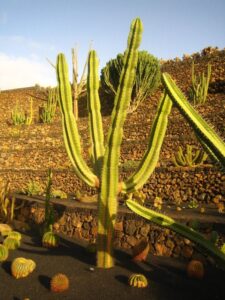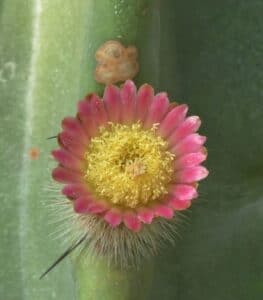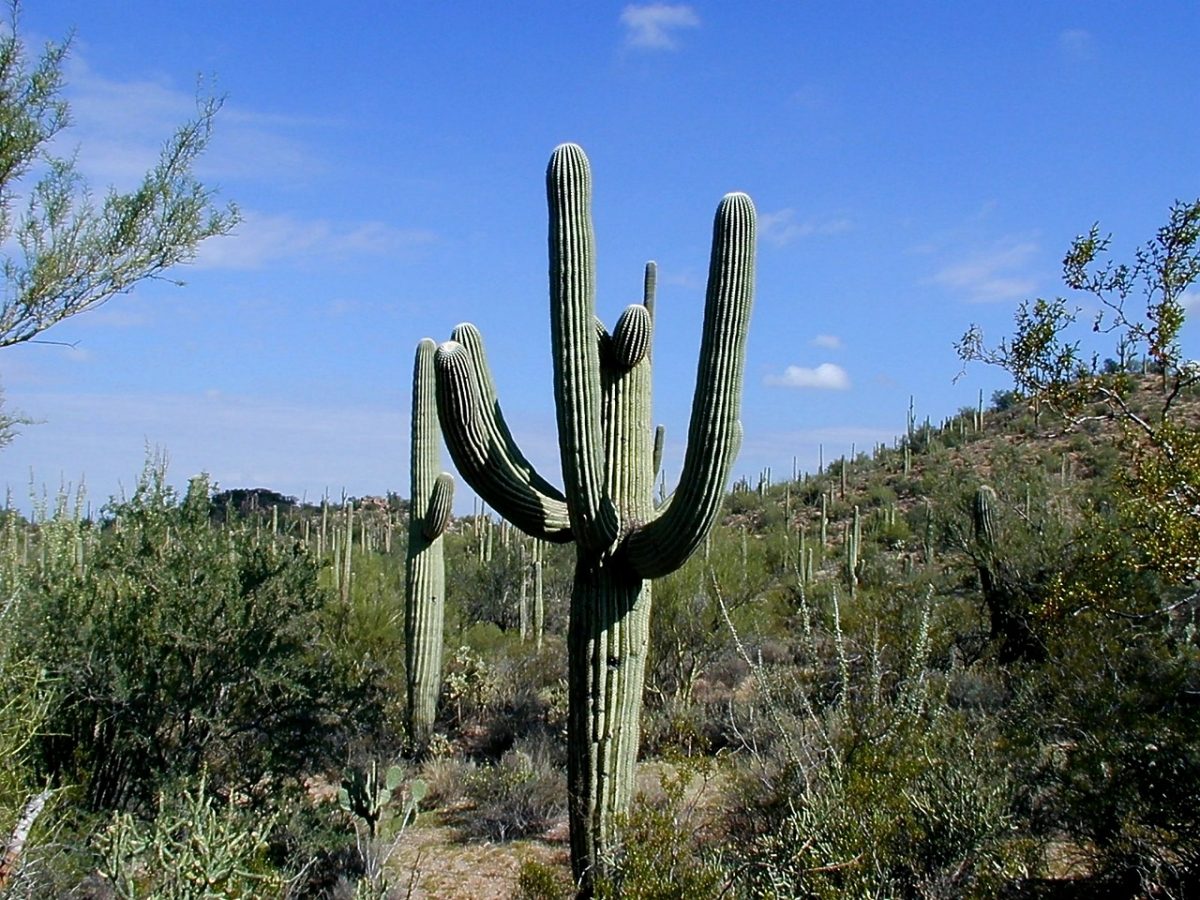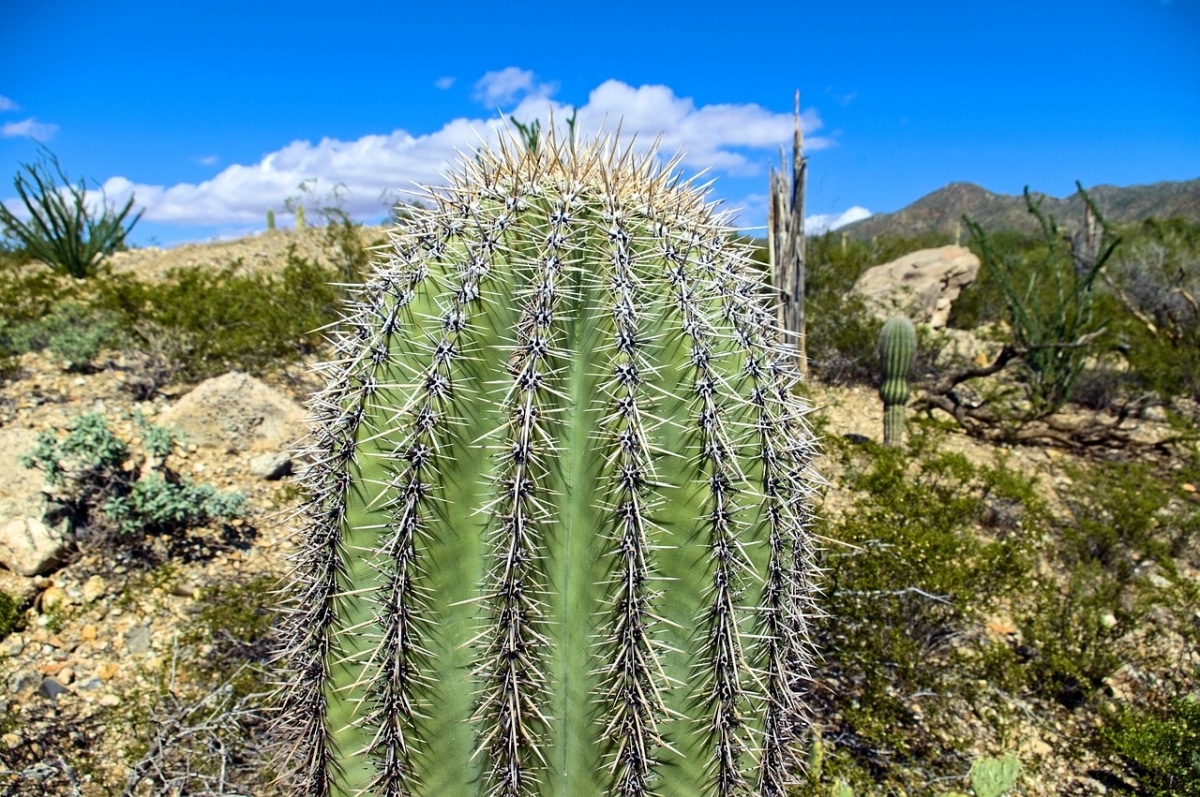
Columnar cacti are easy to distinguish, since from very young they have a vertical growth. These plants are really fascinating: They grow in regions where, at least in appearance, there is hardly any water, and yet they can exceed ten meters in height. How do they do that?
Taking advantage of the environmental humidity to the maximum, of course. Water droplets land on them, and the stomata open to absorb them. And when it rains, something that happens very few times a year, their roots store as much as they can so they can survive the rest of the year. But, Did you know that there are many types of columnar cacti?
candlestick cacti (Cereus uruguyanus)
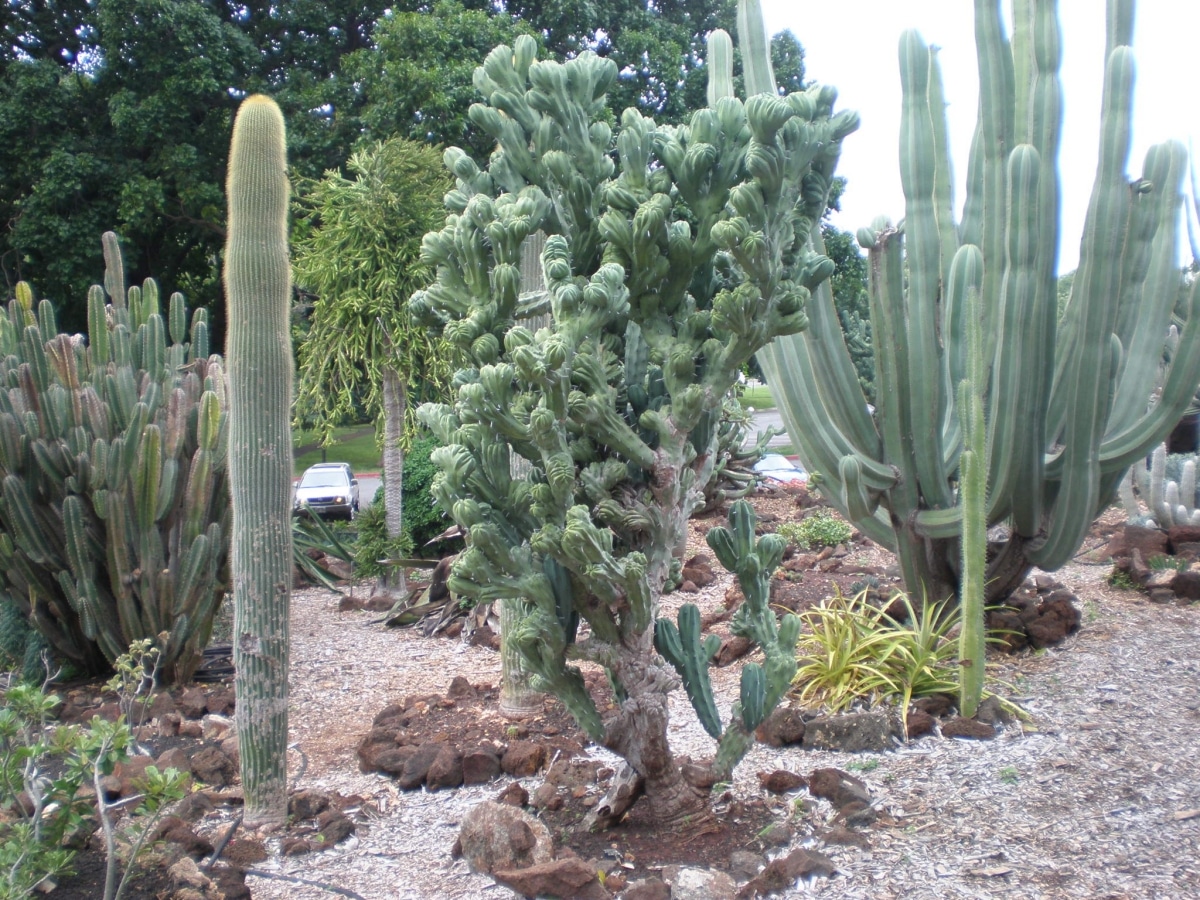
Image – Flickr/Joel Abroad // It's the one in the center of the photo.
The previously called Cereus peruvianus, is a plant native to Peru, Brazil and Uruguay that reaches 15 meters in height. It branches a lot and also does it from the ground, so it needs a lot of space to be able to develop well. It has a bluish-green stem when young, turning green as it ages. Its flowers are white and measure about 15 centimeters in length. It grows quite fast, at a rate of between 30 and 50 centimeters a year. Tolerates frost down to -4ºC.
Also, it is interesting to know that there is a monstrous form, which is the one you can see in the image above.
San Pedro cacti (Echinopsis pachanoi)
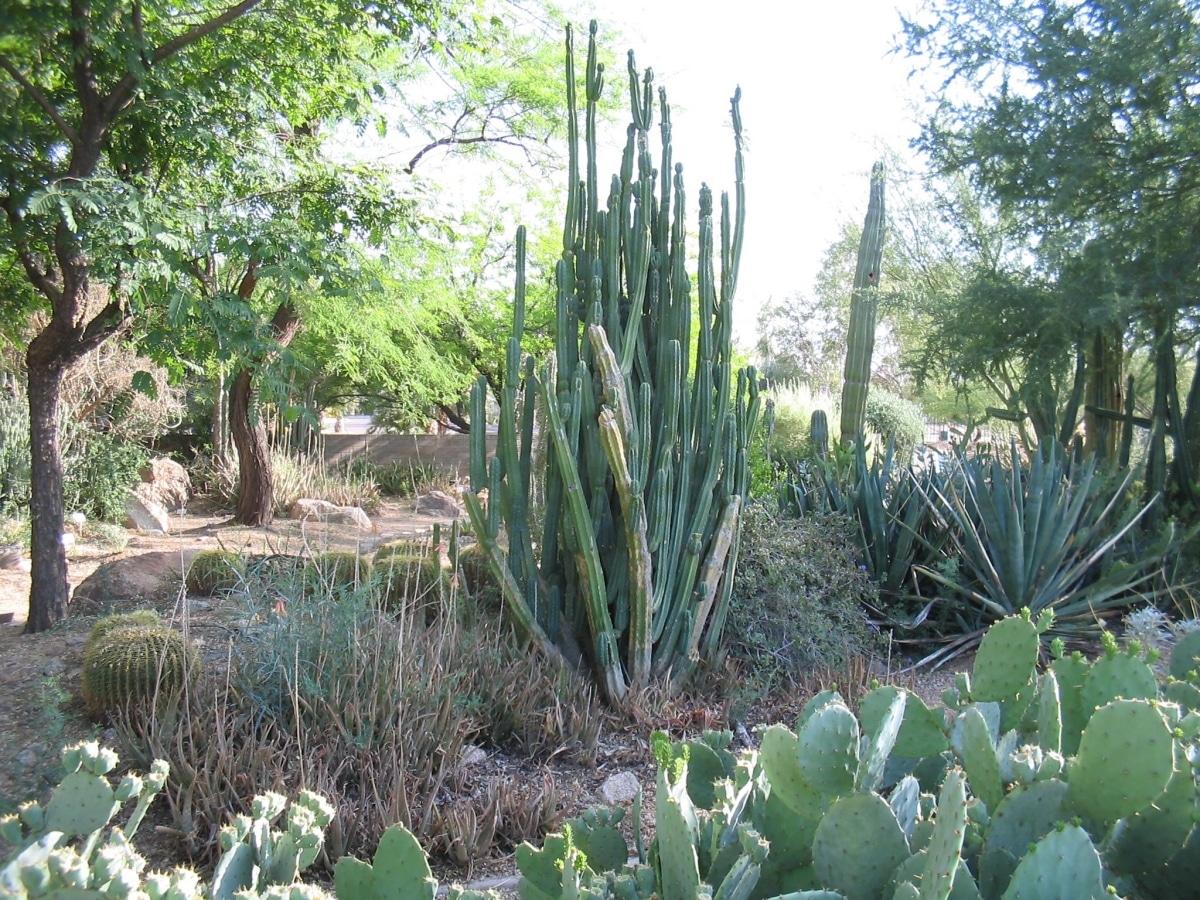
It's the one in the center of the photo.
El San Pedro cacti It is a columnar plant native to the Andes, which reaches 7 meters in height. It has a dark green or glaucous stem, sometimes protected with brownish spines about 2 centimeters long. It produces white flowers, up to 5 centimeters in diameter, and fragrant. It grows relatively fast, making it an interesting species to grow in a garden, as it tolerates frosts down to -5ºC.
woolly cacti (Lanata wife)

Image – Flickr/Megan Hansen // It's the one in the center.
La Lanata wife is a columnar cactus originally from Peru and Ecuador who reaches a height of 5-6 meters. It has a greenish stem well protected by long white "hairs" as well as some yellow spines. The flowers are white, and are approximately 5 centimeters long. Withstands up to -12ºC.
Cardon (Pachycereus pringlei)
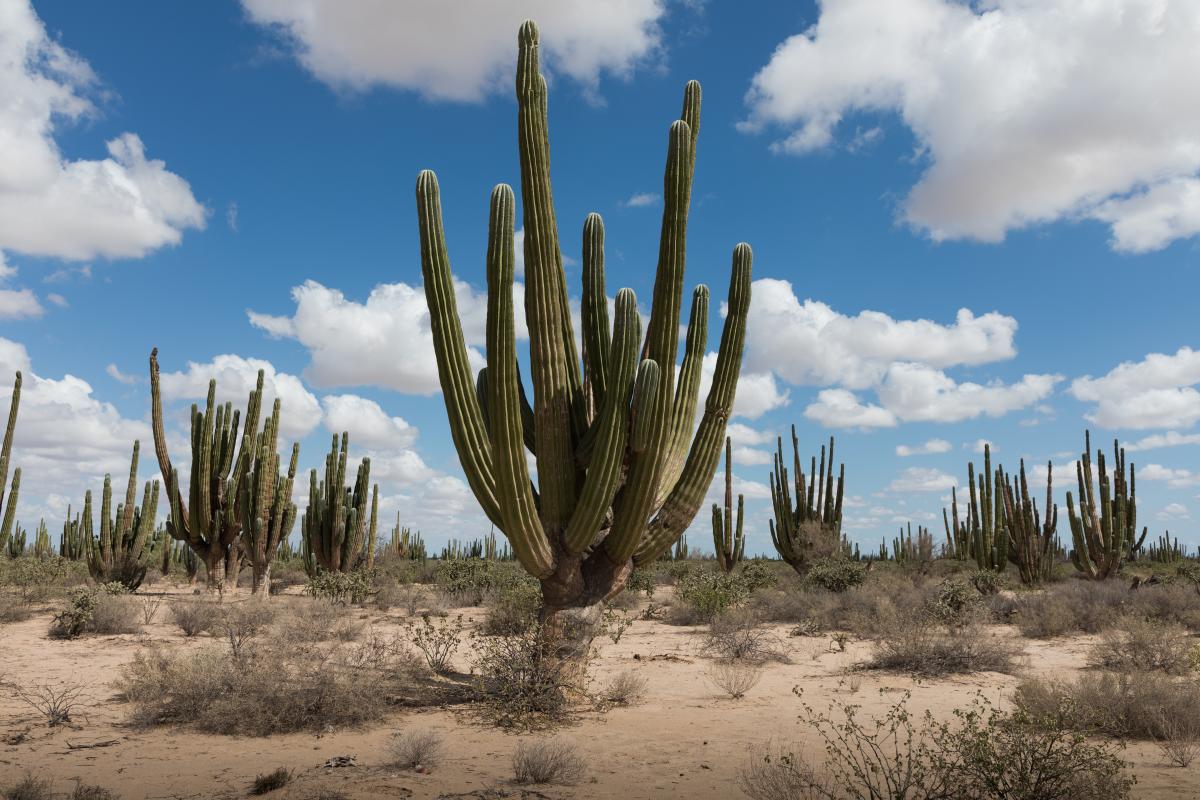
Image – Wikimedia/Tomas Castelazo
El teasel It is a columnar cactus that grows in Baja California and in southeastern Sonora. It can reach 19 meters in height, and tends to branch a short distance from the ground. When young, it has very sharp whitish spines; however, as it gains height, it loses them. It produces yellowish-white flowers, whose pollen and nectar are the main foods of a wide variety of animals, such as bats, as well as the fruits. Its growth rate is much faster than that of other columnar cacti, more or less, it grows 1 meter every 5-7 years; because of that, it is usually cultivated more frequently. It resists up to -6ºC.
Cardon of the Puna (Echinopsis Atacamensis)
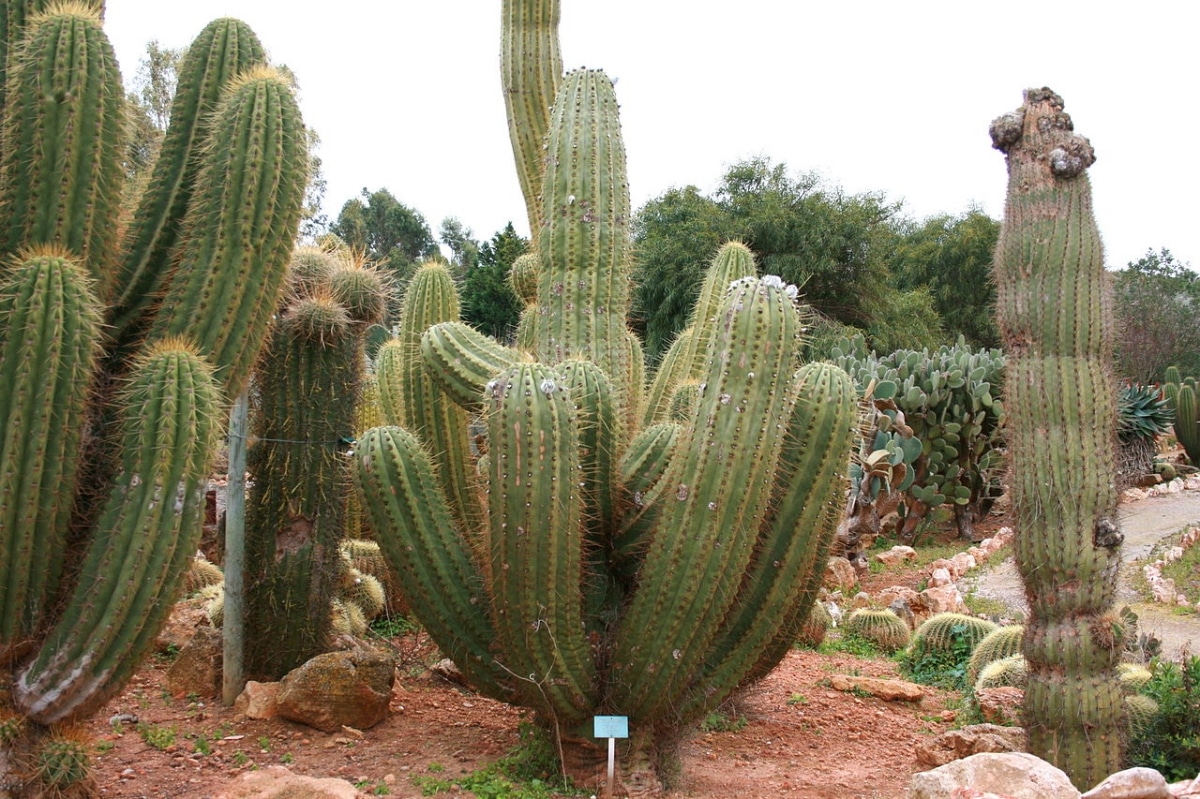
Image - Wikimedia / Frank Vincentz
The cardón de la Puna, cardón grande, or cardón de la Sierra as it is also called, is a cactus endemic to the Andes Mountains. It grows up to 10 meters in height, and tends to branch a little; In fact, from a distance it can be confused with the saguaro since, like it, its branches emerge far from the ground. But it is easy to differentiate it from this one by the color of its spines, since they are orange and not greyish. It can withstand up to -5ºC, as long as they are short-term frosts.
Cleistocactus strausii
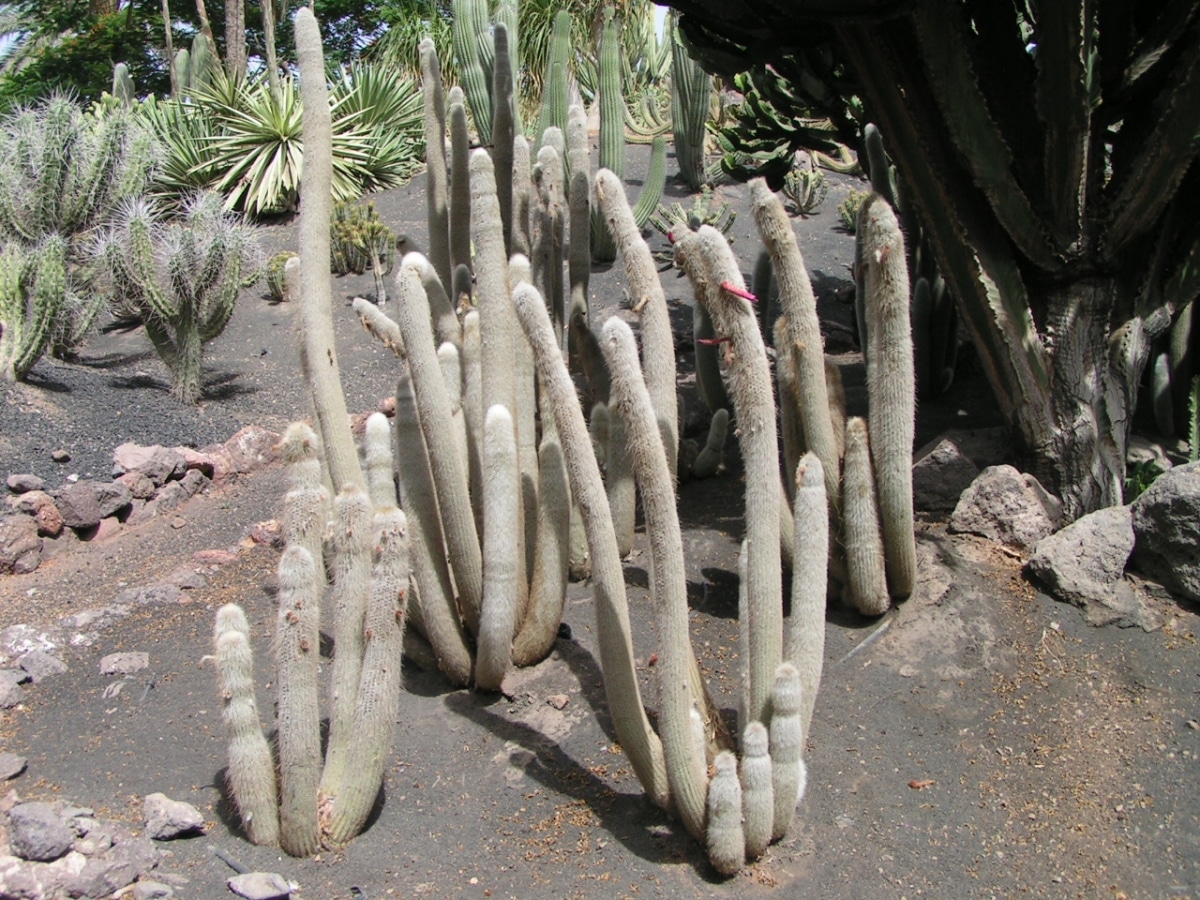
Image – Wikimedia/Paginazero
El Cleistocactus strausii It is a columnar cactus endemic to Argentina and Bolivia. It grows up to 3 meters in height, and its stems are only 5-7 centimeters thick. From the areoles sprout several yellowish spines about 4 centimeters long, as well as other shorter white ones. The flowers are dark red, about 6 centimeters long, and cylindrical in shape. Withstands up to -10ºC.
Oreocereus celsianus
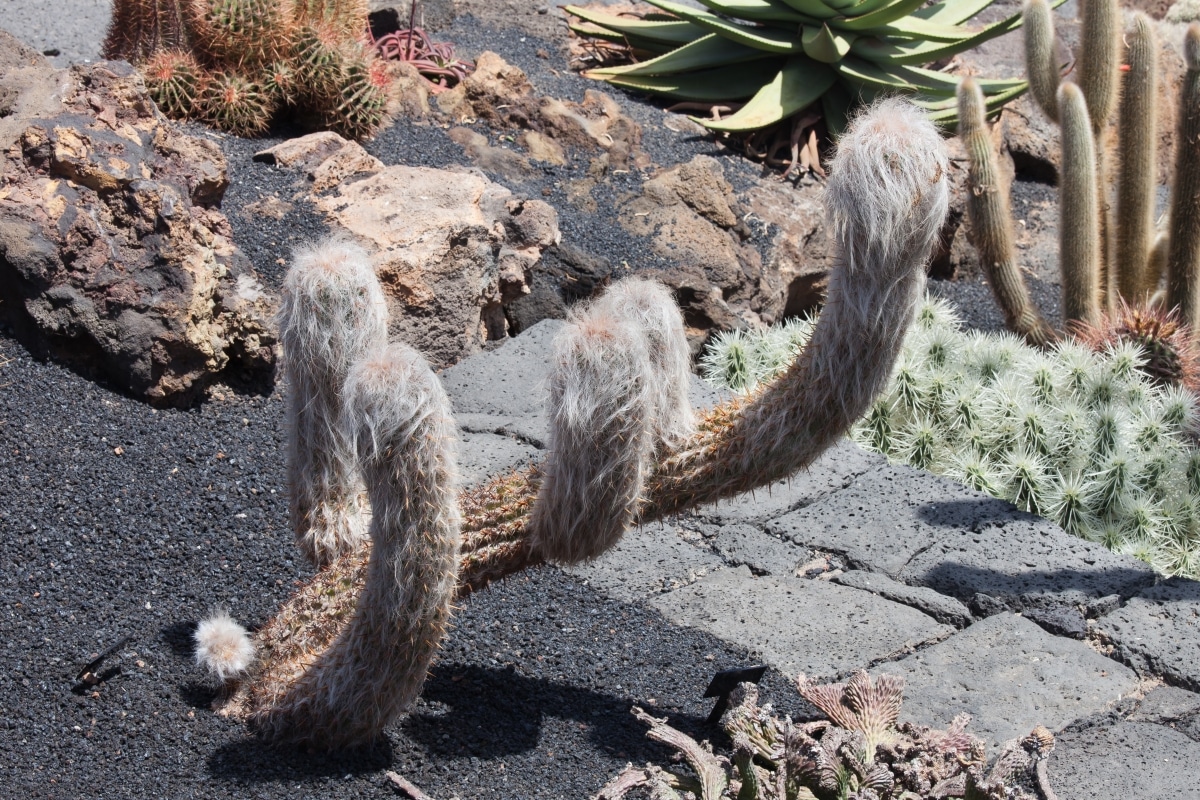
Image - Wikimedia / Luis Miguel Bugallo Sánchez (Lmbuga)
El Oreocereus celsianus is an endemic cactus from Chile, Peru, Bolivia and Argentina that grows to 2 meters in height. Spines arise from the areoles: four central ones up to 8 centimeters long, and about 9 radial ones up to 2 centimeters long. Likewise, it is important that you know that it produces long white "hair", which serves to protect it from frost. It resists up to -7ºC.
Neoraimondia Herzogiana
- Image - Wikimedia / Megan Hansen
- Image - Flickr / Cerlin Ng
La Neoraimondia Herzogiana is an endemic cactus from Bolivia that reaches a height of up to 15 meters. It has a spiny green stem with few branches, and produces white or pink flowers about 5-6 centimeters in diameter. Its fruits are edible, so it can be very interesting to have it in a garden. It is not very cold resistant, but it can withstand light frosts of up to -3ºC if they are short-lived.
Saguaros (The giant carnage)
El saguaros It is the typical columnar cactus that comes to mind when we think of the deserts of America. Native to the Sonoran desert, is a plant that reaches a height of 18 meters, but for this it needs a long, long time, since it grows more or less 1 meter every 15-25 years, depending on the environmental conditions in the area. Its body is rather slender, measuring about 30-40 centimeters thick in adulthood, and is covered with long, sharp spines, especially in its youth. In addition, it tends to branch several meters high. Its flowers are white, large, and nocturnal. It can withstand frosts down to -9ºC and temperatures close to 50ºC, however, young specimens need protection.
Stetsonian (stetsonia coryne)
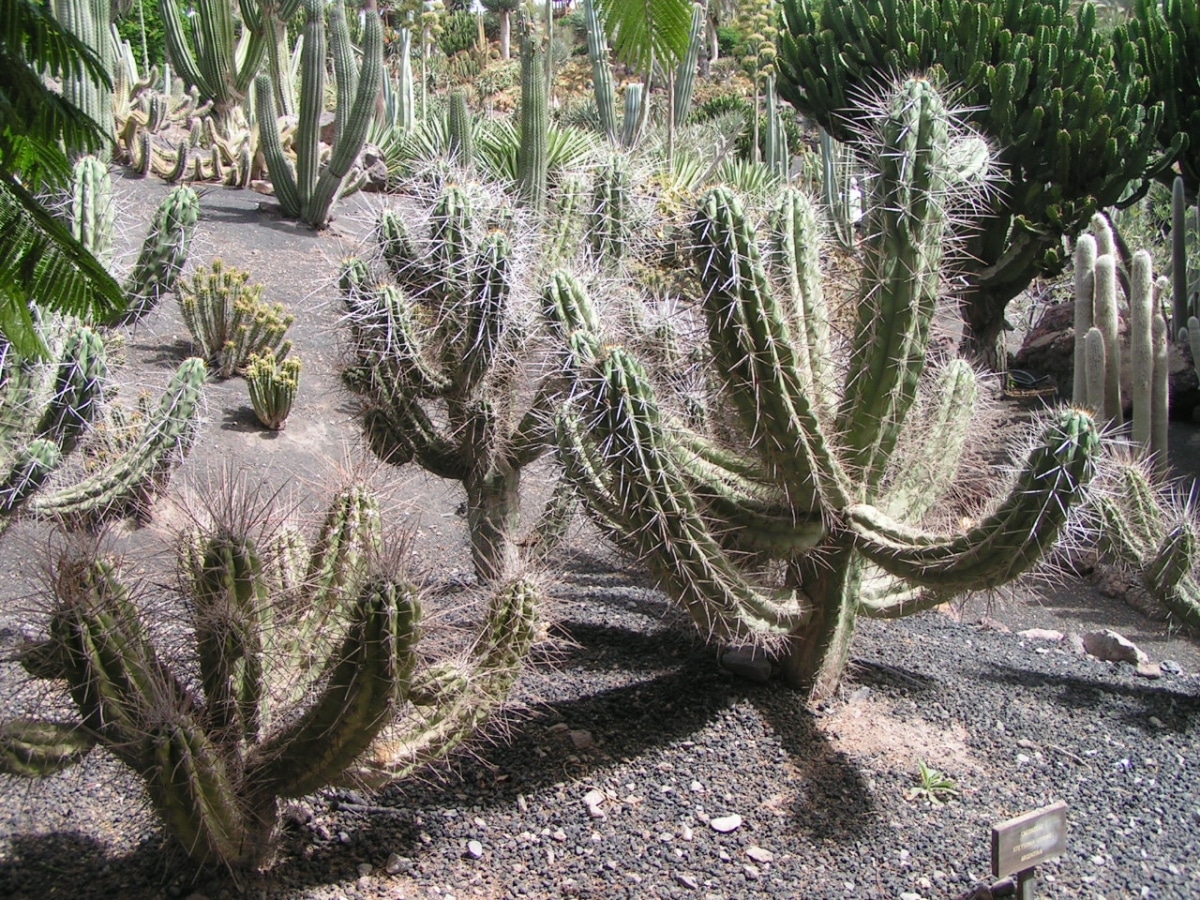
Image – Wikimedia/Paginazero
La stetsonia coryne It is a cactus native to the deserts of Paraguay, Bolivia and Argentina that reaches 12 meters in height. It develops a thick and short main stem, which can measure up to 50 centimeters wide, and is highly branched. Their spines are dark brown/black when young, but as the plant matures, they become white with dark tips. Its flowers are green and white, measure about 15 centimeters in diameter and open at night. It resists frost down to -4ºC.
Which of these types of columnar cacti did you like the most?
